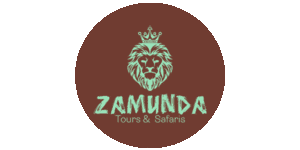

Tarangire National Park
The Tarangire National Park portal is a non-profit resource that provides comprehensive information about wildlife, attractions, activities in Tarangire, safari accommodations, the best times to visit, travel logistics, Tarangire Safaris & Tours, safari pricing, and a travel blog.
As the sixth largest national park in Tanzania, covering an area of 2,600 square kilometers, Tarangire National Park is renowned for its significant herds of elephants and the mini wildlife migration that occurs during the dry season, bringing around 250,000 animals into the park. Discover more about safari tours in Tanzania.
Location of Tarangire National Park
Situated slightly away from the well-known Northern Tanzania Safari Circuit, the park is located between the Masai Steppe meadows to the southeast and the lakes of the Great Rift Valley to the north and west. The park’s northern area features the permanent Tarangire River, often referred to as the park's lifeline, especially during the dry season when much of the surrounding area is arid.
This river flows northward and exits the park in the northwestern part, emptying into Lake Burungi. In the southern region, various expansive swamps transform into green plains during the dry season.
It is highly recommended to stay for a few days during your safari in Tarangire, particularly in the southern area of the park, as it offers a less crowded safari experience and allows visitors to immerse themselves in the authentic African ambiance of Tanzania’s countryside.
Tarangire Vegetation
The Tarangire River, which is permanent, is the most prominent feature here and the park derives its name from this river. While several large swamps are fed by some of its tributaries, these tend to be dry for most of the year and can become quite impassable during the rainy season. Generally, Tarangire is much drier than the Serengeti; however, its vegetation is greener, featuring abundant elephant grass, extensive mixed acacia woodlands, and beautiful ribbons of aquatic forests, along with the iconic giant baobab tree, which can live for up to 600 years and store between 300 and 900 liters of water.
Tarangire Wildlife Migration
Annually, from June to November, Tarangire experiences a wildlife migration that, although not as dramatic as the Serengeti’s wildebeest migration, still attracts a considerable number of animals. With much of the surrounding region being dry, the Tarangire River serves as the sole water source, drawing large populations of wildebeests, elephants, gazelles, zebras, hartebeests, buffaloes, and various predators like lions that gather to drink and graze along the riverbanks.
During the rainy season from November to May, zebras and large herds of wildebeests migrate northwest towards the Rift Valley floor, with numerous animals spreading across the expansive open areas of the Masai Steppe and dispersing toward Lake Manyara.
Animals of Tarangire National Park
In Tarangire, you can encounter a variety of wildlife. This park boasts one of the largest elephant populations in Africa, with several herds that can consist of up to 300 individuals each. Additionally, there are significant numbers of impalas, elands, buffaloes, giraffes, Bohor reedbuck, Coke’s hartebeest, Thompson’s gazelle, the greater and lesser kudu, and on rare occasions, the intriguing gerenuk and fringe-eared oryx can also be spotted. A small number of black rhinos are believed to still inhabit this park.
It's common to see large groups of elephants, along with wildebeests and zebras. Other frequently seen animals in Tarangire include leopards, lions, hyenas, and cheetahs, particularly in the southern open regions. Wild dogs are observed only sporadically.
The avian life in Tarangire is also diverse, with over 545 bird species recorded in the area. The vibrant yellow-collared lovebirds and the elusive starlings are abundant here, among other species.
Activities in Tarangire National Park
Safari activities primarily revolve around game drives, but if you reside outside the park's boundaries, you might have the opportunity to participate in walking tours and night safaris. Currently, Oliver’s Camp organizes walking tours as well as fly camping safaris.
Night Game Drives:
One might ask if night game drives are permitted in Tarangire. Yes, night game drives are allowed, but not all lodges provide these experiences. Only those establishments that have met the necessary standards and regulations set by TANAPA, such as Swala and Oliver’s Camp, are authorized to conduct these excursions.
Tarangire Balloon Safaris:
Experience a hot air balloon adventure over Tarangire as you glide above the treetops, enjoying a unique view of wildlife like lions and various ungulates beneath you.
Birding in Tarangire National Park: Birdwatching is another popular activity in Tarangire, where enthusiasts can discover numerous bird species.
Cost of Tarangire Safari
The total expense of a Tarangire Safari is influenced by your choice of accommodation and the activities you plan to undertake. Staying in ultra-luxury lodges like Chem Chem Lodge for $1,250 per person or Little Chem Chem for $1,200 per night, or Kuro Camp for $857 per night will significantly increase your safari budget.
In contrast, mid-range accommodations such as Tarangire River Camp and Maramboi Tent provide more affordable safari options. Budget-conscious travelers may find Lake Burunge Tented Camp to be a suitable choice.
Combining Your Tarangire Safari with Other African Destinations.
You can enrich your trip by visiting nearby locations like Ngorongoro Crater, Selous Game Reserve, Serengeti National Park, or opt for gorilla trekking in Uganda and Rwanda, as well as the


